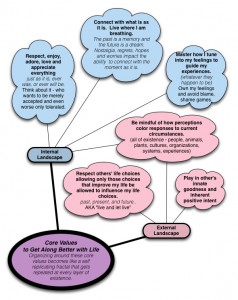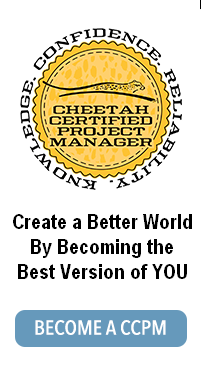High Performing Business – Discernment – Cultural Bias
Saturday, November 5th, 2016Michelle LaBrosse, CCPM, PMP, PMI-ACP, RYT
Culture by it’s very nature is the long standing norms of behavior that guide people’s interactions. I define cutural bias as the cultural attributes we prefer. A couple days ago, I wrote a blog post on my guiding values – the leader of an organization sets the tone and tenor of the culture of their organization. If the leader feels it’s okay to objectify others, satisfy their impulsive base needs at their whim with those they find attractive, then this is going to become the prevailing culture – as abhorent as this sounds. If this is not the cultural bias you prefer, there are ways to change it.
In the US supposedly we get to “choose” our leaders. We can argue if this is in fact true, because more often than not it seems whoever can create the largest war chest whatever way they can, can get themselves into a position to be elected as the leader, whether they are qualified to be the leader or not. Leaders, from my perspective, are not those who buy their way into power – but those who can attract intelligent, qualified, and capable people willing to help them implement their vision. The real leaders set the culture of the organizations they lead. Buying your way into power won’t necessarily make you the leader, especially if your style is counter to the majority’s cultural bias.
We all get to choose which cultures we wish to swim in – whether it be where we live, where we work, with whom we associate. When you run a business, you do in fact get to choose your customers based on how you market, the values you promote about your business, how you organize it, who you hire to work in the business, the way you set up your business processes,etc. You get to set up the culture of your entire operation. I realized this over twenty years ago. It came from reading George Land’s book “Break Point and Beyond.” In this he discusses the nature of “autopiotic” systems. That means systems are self-organized around a core value.
When you become conscious of your own cultural bias – that means the culture in which you would prefer to exist, you can then start to consciously create it. Taking a page from George Land’s playbook, you start by defining your core value. When I started Cheetah Learning in 1999, I set the core value as “your success is my success.” It helped me define how I set up every single element of this business. To date we have attracted over 70,000 students who also live by the guiding mantra – your success is my success. It’s a very uplifting and inspiring world to inhabit – being a “Cheetah.” It is because of this core value that is at the cornerstone of everything we do. And the best thing about this – we do not attract those who feel elsewise – those who need to win at the expense of someone else losing, those who need to build themselves up by putting someone else down, those who need to bully their way into getting their way. These types, they are just naturally not attracted to the Cheetah culture. Believe me this makes everyone happier (including those who love us).
Choose your own cultural bias wisely as it does decide your day to day existence. Every single Cheetah Learning course is designed to help you master the skills you need to become more successful, cheetah fast. Wherever you plug into Cheetah, you will uplift your life in ways you cannot yet even imagine. Connect with one of our inspiring Career Counselors to see how you can expand your own success story (or to just share a great laugh – they are really fun on the phone) – 888-659-2013.




